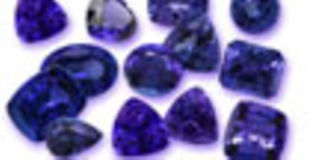Sendeka: Tanzanite hosts get a raw deal

What you need to know:
- In June 2003, the Tanzanian government introduced legislation banning the export of unprocessed Tanzanite to India (like many gemstones, most Tanzanite is cut in Jaipur). The ban has been rationalized as an attempt to spur development of local processing facilities, thereby boosting the economy and recouping profits. This ban was phased in over a two-year period, until which time only stones over 0.5 grams were affected.[citation needed] In 2010, the government of Tanzania banned the export of rough stones weighing more than one gram.
Mirerani. Simanjiro Member of Parliament Christopher Sendeka has decried the abject poverty in which his constituents are wallowing, in spite of hosting Tanzanite, the blue gemstone that is unique to the district.
He says it’s grossly unfair that, financial and other benefits of Mirerani Tanzanite mines are largely benefitting people from other parts of the world.
Addressing small-scale miners, the anguished legislator faulted the Simanjiro District Council for failing to ensure that, part of export earnings from Tanzanite were spent on social welfare promotion projects like the construction of schools, roads and hospitals. “We are custodians of one of the most expensive gemstone in the world, but we are leading acutely miserable lives,” he lamented.
Mr Sendeka saluted tourism sector players for being reciprocal, citing the construction of schools, teachers’ residential houses, libraries and laboratories.
The gesture, he noted, had endeared the investors to the residents, who nursed bitterness against their indifferent Tanzanite sector counterparts.
“Over the nearly 20 years that Tanzanite mining has been undertaken, the investors and other stakeholders, who are reaping lots of money, have not built even a single primary school,” the legislator lamented.
Tanzanite is one of the most expensive gemstones in the world. One gram is sold at between Sh500,000 and 800,000 on the local market, depending on quality.
In his reaction, however, the director of Sky Associate, which conducts gemstone business, Mr Faisal Juma, said his company was constructing a modern hospital in Mirerani.
Reports indicate that smuggling is denying Tanzania some 80 per cent of Tanzanite earnings.
According to Ministry of Energy and Minerals Commissioner, Mr Paul Masanja, while Tanzania exported only $38 million worth of Tanzanite in 2013, exports by Kenya and India were valued at $100 and $300 million, respectively. The government has taken various measures to tackle the problem, Mr Masanja said, declaring that, it would leave no stone unturned to stem the smuggling of the unique resource. “The government intends to establish a special task force drawn from officials from all security organs – the police force, Tanzania People’s Defence Force, state security, immigration and the Tanzania Revenue Authority – to combat mineral smuggling,” he told participants in a three- day gemstone fair in Arusha last year.
The government will also establish a fence surrounding the mines at the 10-square-kilometre Mirerani Controlled Area (MCA), he added.
“The rules of the Mirerani Controlled Area binds every miner to issue identity cards to all recruits, to control entrance and exit from the mines,” Mr Masanja said.
The government is also planning to build a “Mineral House” in Arusha, where minerals can be traded under government supervision. In 2010, the government banned the export of the uncut and unpolished variety of the gemstone weighing 1gm and above. This was intended to spur local processing, raise government tax and create jobs for thousands of jobless youth. In 2011, the government introduced a system that binds every dealer to obtain a certificate of origin against which trading in the mineral should be conducted.




